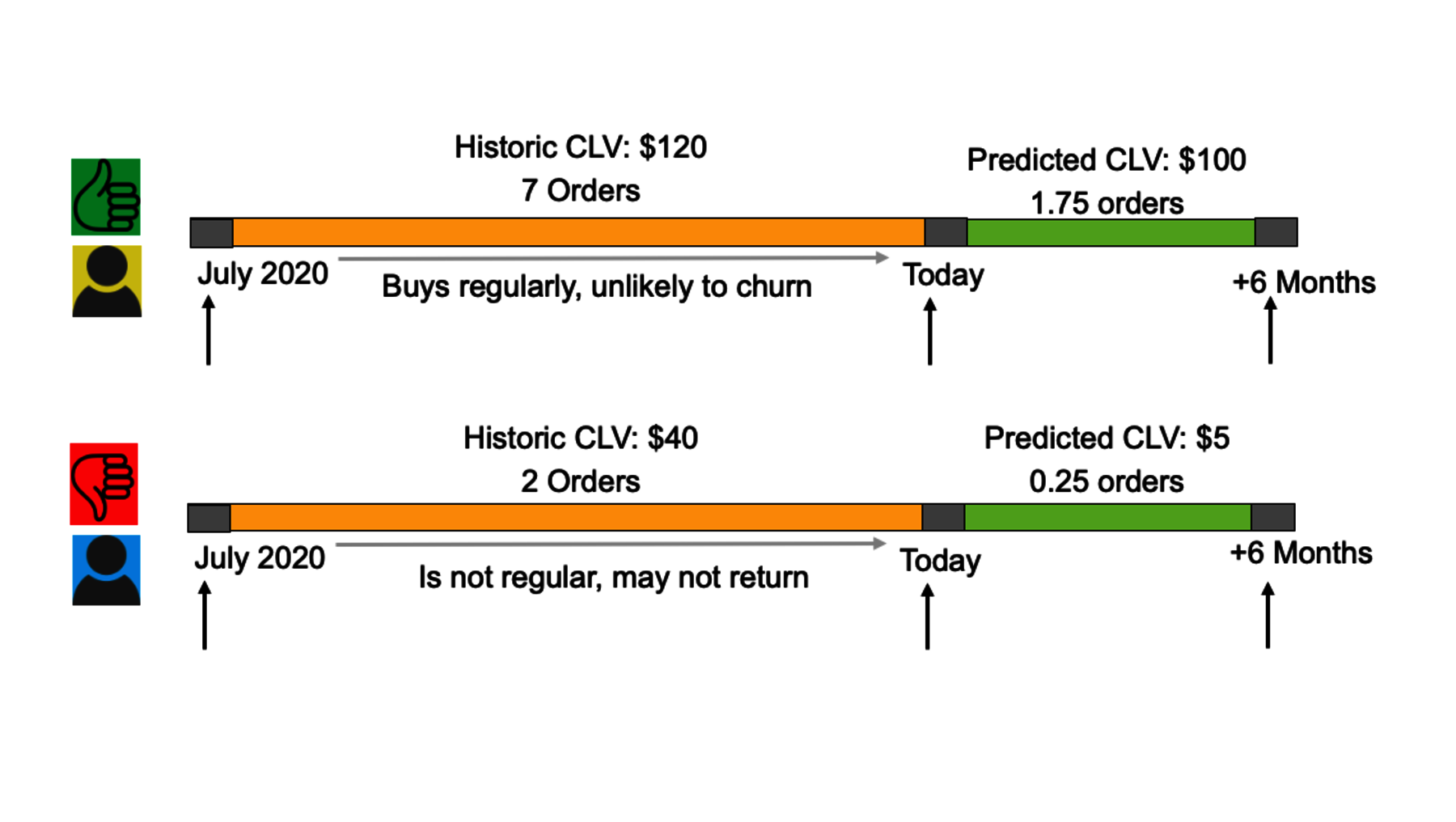Projekt
Predictive CLV and Customer Segmentation
- Modul / Lehrveranstaltung: Projekt DataScience
- Semester: 1.-3. Semester
- Jahr: 2021
Customer lifetime value (CLV) is a key metric in any organisation that is focused on current and long term growth. The concept of CLV is simple – it’s the total value of a customer across the entire duration of their relationship with a company. While it’s a standard practice to calculate the current and past value of customers, how can it be possible to predict what each customer is going to spend in the future?
The answer is not so complex and with very limited data parameters, its possible to predict CLV. With readily available machine learning tools and packages dedicated to predict only CLV, it’s nowadays possible to calculate advanced predictive CLV for all customers as well as individual customers. Moreover, we showcase methods to generate customer segments, that are extremely useful in prioritising which segments to focus on and ensure a stable/strong revenue growth.
We used a common data science environment including Jupyter notebooks and Python. The implementation of the data analysis, charts and predictive CLV were done using a package called Lifetimes and we compared it with other approaches as well. We started out with processing the transactions data to create RFM values (Recency Frequency & monetary value). After performing the final modelling we were able to see individual customer’s predicted monetary values. We also generated multiple customer segments using K-means to showcase how a company can easily focus on its top segment of customers and retain them profitably over longer periods of time. These predictions can be obviously improved by using more advanced models like Deep neural networks. However, this approach works best with companies that have lesser amounts of data and are still able to perform advanced predictive CLV analysis.
Betreuer/in

